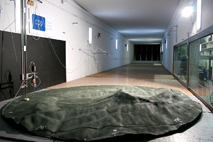A Valid Wind Option?
 While potentially offering high wind speeds, complex orography presents a formidable challenge for wind resource assessment because numerical models fail to capture the turbulent flow patterns that affect hub-height wind speeds as well as the shear across the turbine rotor. This article describes a ‘hybrid approach’ as a tool to successfully tackle this problem. This approach includes mesoscale modelling, analytical boundary-layer models, field data acquisition and reduced-scale physical modelling.
While potentially offering high wind speeds, complex orography presents a formidable challenge for wind resource assessment because numerical models fail to capture the turbulent flow patterns that affect hub-height wind speeds as well as the shear across the turbine rotor. This article describes a ‘hybrid approach’ as a tool to successfully tackle this problem. This approach includes mesoscale modelling, analytical boundary-layer models, field data acquisition and reduced-scale physical modelling.
By Brad C. Cochran, Sr Associate, and Rick R. Damiani, Sr Engineer, CPP Wind Engineering, USA .
 While potentially offering high wind speeds, complex orography presents a formidable challenge for wind resource assessment because numerical models fail to capture the turbulent flow patterns that affect hub-height wind speeds as well as the shear across the turbine rotor. This article describes a ‘hybrid approach’ as a tool to successfully tackle this problem. This approach includes mesoscale modelling, analytical boundary-layer models, field data acquisition and reduced-scale physical modelling.
While potentially offering high wind speeds, complex orography presents a formidable challenge for wind resource assessment because numerical models fail to capture the turbulent flow patterns that affect hub-height wind speeds as well as the shear across the turbine rotor. This article describes a ‘hybrid approach’ as a tool to successfully tackle this problem. This approach includes mesoscale modelling, analytical boundary-layer models, field data acquisition and reduced-scale physical modelling.By Brad C. Cochran, Sr Associate, and Rick R. Damiani, Sr Engineer, CPP Wind Engineering, USA .








